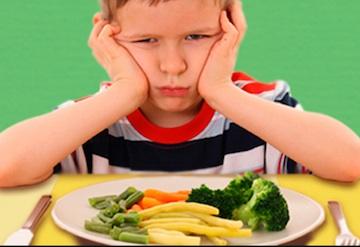Junk food ads can impact childhood eating habits
Junk food ads really are contributing to childhood obesity, according to a new study by McMaster University.
Researchers examined 29 randomized trials that provided data on nearly 6,000 children to understand the influence of junk food marketing on children’s dietary intake and preference. They concluded that ads for “unhealthy foods and beverages high in sugar or salt have an immediate and significant impact on children and lead to harmful diets.”
“Although the association of advertising on child behaviour is somewhat obvious, we sought to quantify the state of the current evidence on the impact of junk-food marketing on caloric intake and nutritional preferences over the short term,” study co-author Dr. Bradley Johnston, assistant professor of clinical epidemiology and biostatistics at McMaster’s Michael G. DeGroote School of Medicine, told Canadian Grocer's sister publication Marketing.
For the study, researchers looked at previous studies on junk food advertising through a variety of platforms including TV and movie commercials, video games, branded logos, packaging with licensed characters and magazine ads.
The meta-analysis showed when kids were exposed to unhealthy advertisements, they consumed significantly more unhealthy calories than healthy calories, during or shortly after exposure to ads. Similarly, children exposed to unhealthy food and beverage marketing increased their preference for junk food.
The findings also suggest children under eight may be more susceptible to junk-food advertising. “It’s unclear exactly why that is, but it may be that younger children may be more likely to imitate the unhealthy behaviours that they see in advertisements,” said Johnston.
The researchers said the findings are particularly important considering recent studies revealing children are exposed to an average of five food ads per hour, with unhealthy foods accounting for more than 80% of all televised food ads in Canada, the United States and Germany.
To combat the effects of junk-food advertising on childhood obesity, Johnston would like to see government regulations, rather than industry self-regulation. “The truth is, industry standards fall short and they’re not
“I do believe that the provinces in Canada and the federal government need to make restrictions around the exposure of unhealthy food and beverages, like what’s happened in Quebec.” (The province bans junk-food marketing to kids under 13).
Of course, junk food advertising is just one component of childhood obesity, and as the refrain goes, kids don’t drive themselves to McDonald’s.
“Parents obviously play a major role with respect to what their child is exposed to and what they eat,” said Johnston. “But, despite their efforts of maybe trying to steer their children towards fresh fruit and vegetables, junk food ads still drive kids towards poor food and beverages choices. Even if you avoid television, for example, junk food ads also show up on the internet including YouTube Kids and video games.”
This article first appeared on MarketingMag.ca


